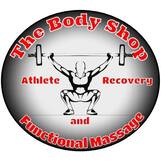|
Orthopedic Rehabilitation Orthopedic rehabilitation takes place after an injury, surgery, or any disruption in the musculoskeletal system. Sometimes, rehabilitation can be used to prevent or postpone surgery. Physical therapists, occupational therapists and orthopedists use various techniques to restore function to affected limbs, movement patterns, and daily life activities. These techniques may include stretching/strengthening/stabilization exercises, manual therapy, heat/cold therapy, electrical stimulation, kinesiology taping and dry needling just to name a few. For the athlete, at any performance level, this may take weeks and sometimes months out of your training or competition schedule. Athletic Prehabilitation Sports medicine physicians and training professionals are making themselves more familiar with the concept of PREhabilitation for the young athlete. Prehabilitation is a preventative measure, not a performance boosting tool. It is a system of education, training, and evaluations to prevent injury in the young athlete. However, the athlete will see faster, more consistent improvement in their performance because of a decrease in recovery time and injuries. We, as sports professionals, are making it our responsibility to prevent non-contact injuries due to poor training habits and poor biomechanical movement patterns and imbalances in muscular development Your Trainer’s Role Trainers function to guide young athletes and improve their performance through training and education. It is the trainer’s responsibility to demand proper movement patterns, safe training habits, proper nutrition, and consistent recovery practices. A successful prehab system includes:
Recovery and Tissue Health Trainers and health professionals need to work together to maintain the muscular tissue health of all athletes. Physical therapists and massage therapists work to improve muscular length, decrease recovery time, improve circulation, decrease the occurrence and severity of Delayed Onset Muscle Soreness (DOMS), reduce the accumulation of scar tissue, and eliminate trigger points in the muscle tissue. What Does It All Mean? By teaching proper movement patterns and good training habits, we can prevent most non-contact injuries from occurring in the young athlete. We can also track and adjust training based on the individual needs of the athlete. Bodywork professionals help prevent injuries by maintaining the functional length of muscle fibers and reducing tension and strain on connective tissues as the young athlete grows. Together, we prepare the athlete’s body for the demand that the sport will put on it. In the event of a contact injury, the tissue is healthier and more capable of responding to the trauma. When the muscle is properly prepared, it can recover faster and with fewer lasting effects that might hinder the athlete’s performance. Stacey Meek, USAW Owner, The Body Shop Sports Massage Therapist
0 Comments
|
AuthorsJoseph Pearson Archives
November 2020
Categories |
HoursBy Appointment
|
Telephone(984) 204 6295
|
|
Address
|


 RSS Feed
RSS Feed